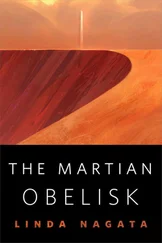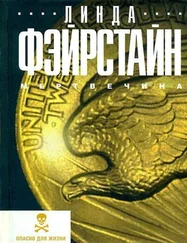They watched for several seconds as the blue light brightened. Specks shifted relative to one another. A few merged, brightening again when they made contact. Others drifted away.
Clemantine spoke quietly. “Can we use the gamma-ray gun to target the visible debris? Vaporize it?”
Given her history, it surprised Urban to hear her propose the use of the gun. Such monstrous Chenzeme weapons had taken so much from her. But she regarded him now with a hard pragmatic gaze.
As he hesitated, the Engineer took on the task of answering her question, explaining, “The tactic is impractical at this time. The debris is over four light-hours away and tumbling in an unpredictable manner—and the beam is narrow. It’s unlikely to find a target.”
“Then we modify our course,” Clemantine said, her gaze still fixed on Urban.
This time, the Pilot responded: “Course adjustments are being undertaken. Instructions are already outbound, directing the fleet away from the debris.”
Of all the Apparatchiks, the Mathematician looked the most like Urban, even dressed like him in dark, simple clothing—not as any kind of acknowledgment of common origin, but because he just didn’t care about appearance and could not be bothered to modify it. In personality he was reserved and reticent, but he spoke now, explaining, “Shifting the fleet’s course and slowing its momentum will reduce the danger, but not eliminate it. The debris field will have inherited Pytheas ’s momentum. It will continue to coast on the fleet’s original heading, even as dispersive forces contend against the exotic physics of the reef. It might be years before the threat is left behind.”
Urban nodded agreement. Like he’d said, he’d been through this before.
On the video, the blue sparks dimmed. After several more seconds, they disappeared, leaving nothing visible to mark the shattered remains of Pytheas .
“Gone dark,” Kona said. “But still a threat. Can we implement a radar system to try to map the debris?”
“As the distance decreases we should be able to track the larger fragments,” the Engineer said. “But fragments too small to be detected can still cause critical damage to the outriders.”
The danger was unseen and would remain unknowable, but it was all too real. Urban envisioned the lost outrider as a revenant spray of kinetic projectiles hurtling through the void, with some small but critical percentage of them speeding along trajectories that would inevitably take them toward the trailing ships in the fleet.
<><><>
Clemantine duplicated her ghost.
She sent one version to the high bridge where she listened to the braided conversations of the philosopher cells as they analyzed the loss of Pytheas and debated the value of different mathematical models meant to predict the dispersion of debris.
Her other ghost she sent into the library’s circular research room, where stacks of files surrounded her. She summoned the Scholar.
On the main floor of the library the Apparatchiks always appeared confined within the virtual space of a frame, but here among the stacks, the Scholar instantiated without any such restriction. He stood facing her, dressed in what she considered a formal fashion: a long, loose, dark-blue tunic and voluminous trousers of the same color.
The Scholar was the Apparatchik who looked the least like Urban. His aspect was older, his features sharper, his eyes a strange violet gray, and he’d styled his hair so that it was smooth and long. Tied at the back of his head, it reached his waist.
“I want to know more about the first time an outrider was lost,” Clemantine told him.
He eyed her with an unsettling intensity, and then nodded. “I have a brief report prepared for you.” He touched a file, seemingly at random, and a door opened onto another circular room. “Follow, please.”
She traded subminds with her ghost on the high bridge, where her attention was caught by a centuries-old memory brought into play among a cluster of philosopher cells. The memory circulated as more and more individual cells found value in it and passed it on. It was a study of ballistic motion, like the simulations tracking Pytheas ’s debris field—a chaotic, tumbling collision of particles ranging in size from dust motes to meter-wide lumps—but this played out far more quickly.
It came to her: Like her, the philosopher cells were interested in the history of that first lost outrider. They were using remembered data from that original incident to test a new mathematical model meant to predict the dispersion of debris.
Ahead of her, the Scholar stepped through the open doorway into another room within the library. Clemantine followed him, but drew back when she saw Vytet already there—this new Vytet, not the Vytet she remembered—and Vytet looked equally taken aback by the sudden company.
In all the vastness of the library, what were the odds of running into someone else? Excellent , if both were chasing the same topic.
Vytet recovered his composure first, saying, “This room is devoted to Khonsu, both the ancient deity and the outrider that bears its name. I expect we’re both here for that reason.”
His low voice disturbed her. She was too accustomed to thinking of him as a woman. She had liked him that way. “So you decided to go over to the other side,” she said, striving for a humorous tone. Mostly failing.
His smile was sharp-edged. “I like the shift of perspective. It forces me to see things from a different point of view. You should try it sometime.”
“I’m good. Thank you.”
Ignoring this exchange, the Scholar touched a file, again seemingly at random. A screen unfolded from it, displaying an unfamiliar starfield. After a few seconds, Clemantine saw a distant flare of blue light. The Scholar pointed, saying, “ There . That is the moment the outrider that first bore the name of Khonsu was lost.” After several more seconds, blue sparks appeared, marking the remnants of the shattered reef.
“The dispersion of the debris was monitored and mapped to the extent possible,” the Scholar explained as the video transitioned to show the hypothesized spread.
Clemantine nodded. From her post on the high bridge, she’d already seen a model of Khonsu ’s debris field—one sketched with more certainty than this. In the Scholar’s rendition, most of the fragments were transparent, barely there, reflecting a lack of certainty in their positions or maybe their existences. But both models depicted objects subject to an unnatural physics, following curved paths, even spiraling around each other, as if drawn by magnetism or an unaccountable gravity, before tumbling apart and disappearing.
The Scholar said, “We believe that at this point the fragments of the reef expired.”
Clemantine eyed the time scale in the corner of the display. “After just a few hours?” she asked.
The Scholar confirmed this with a nod. “We were unable to track the debris after that point.”
On the high bridge, currents of thought wove across the cell field, coalescing, diverging. Several threads considered the existence of a new ancillary ship already growing within Dragon ’s tissue.
A ship?
Clemantine’s surprise at this concept bled out into the cells, where it ignited a responding suspicion. She remembered then: It’s not a ship. It’s the gee deck.
The philosopher cells had been deceived into perceiving the deck as a nascent ship—that was its camouflage—but Clemantine had stumbled, introducing doubt, and now the philosopher cells were questioning the legitimacy of the nascent ship.
She needed to correct that, soothe their doubt, allay suspicion—but Urban got there first with a concise argument that flooded the field from a hundred thousand points:
Читать дальше












